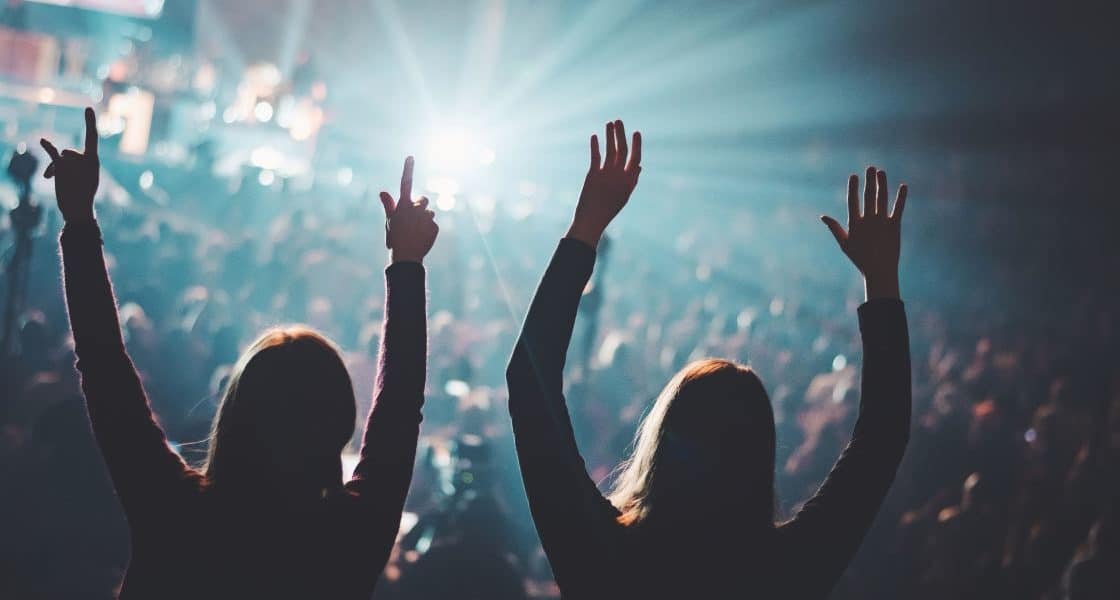We’ve come a long way since the days of limited LED color choices and high expense. The cost of LED lighting keeps coming down, but it still hasn’t reached parity with traditional lighting. Or has it?
There are more factors to consider than just the sticker price, so let’s investigate whether any long-term savings make up for a higher initial cost.
- Longer Life
An LED light will outlast a conventional PAR. However, this is about more than just cost-per-hour operation. If the light is difficult to access, then you have to factor in the time required to replace it—particularly if it goes out unexpectedly and must be fixed now. This also means you need to stock replacement lights because you never know when a light will fail.
However, note that unlike conventional lighting, LEDs don’t just burn out and stop working. They gradually get dimmer over a long period of time, so if after several years, you think that the light is somewhat dimmer, you have plenty of time to replace it before it’s too dim for your liking.
- Lower Utility Costs
This has two sides. First, LED lights draw less current, so you’ll save on electricity bills (and because they draw less current, they’re more friendly for smaller venues that may have fewer outlets, or outlets with limited current-carrying capacity).
Second, they generate less heat, which saves on air conditioning costs in the summer. (So if you say, “LEDs are cool,” you’re technically correct.) The reduced heat also means that performers aren’t subjected to a heat barrage while on stage, so they’ll be more comfortable. The tradeoff is that you don’t get the benefit of traditional lights in winter, which generate a considerable amount of heat.
However, looked at over the course of a year for both light and heating/cooling, LEDs save money—especially compared to incandescent bulb technologies. What’s more, LEDs are also much more efficient than HID (high-intensity discharge) or halogen lamps.
- More Flexibility
One LED fixture can provide a choice of colors, which eliminates using gels (and also eliminates changing and replacing gels, as well as gels melting from heat). Individual LEDs can be designed to create different shapes, and since they are individually dimmable, computer control means that you can create all kinds of lighting patterns and moving lights, in a wide variety of colors.
Also unlike other light technologies, LEDs switch on and off instantly. And, as a bonus, frequent on/off switching doesn’t shorten the LEDs lifespan. Furthermore, “classic” lighting effects that used incandescent lamps are being brought back with LED-based devices.
- Ruggedness
Impact resistance isn’t that crucial, given that most lights are set and forget. But still, packing, unpacking, handling, and the like can create impacts that would kill a halogen lamp, yet not affect LED lights. Also, for outdoor applications, LEDs are more rugged, and can even withstand exposure to weather (heat, cold, moisture, etc.).
- Ecologically Sound
Of course, nothing is totally green, because of manufacturing issues, shipping, and the like. But in addition to lower power consumption, LED lights convert about 80% of their energy to light. Incandescent light bulbs are typically the opposite—only 20% of their energy is converted to light.
Furthermore, LED lights have recyclable materials, contain no mercury or other heavy metals, don’t generate ultra-violet or infrared emissions, and because of their longer life, even if not recycled they at least fill up landfills at a slower rate.
- No Dimmer Packs
Your DMX controller can take care of all the light control you need. What’s more, dimming LEDs reduces their power consumption and extends their life. Compare this with metal halide-based lights, which become less efficient when dimmed (which assumes the particular bulb even allows for dimming).
- Better Directionality
LEDs disperse light over 180 degrees, whereas traditional lights disperse light over 360 degrees. Making traditional lights directional requires directing or reflecting the light, which in the process, also reduces efficiency and requires accessories that LEDs often don’t need.
The handwriting is on the wall: LED lights will continue to improve performance and offer lower prices. At some point in the future, LEDs will be the only logical choice for all applications, from residential, to entertainment, to commercial.
However, we’re not quite there yet in terms of the initial cost. Converting an incandescent-based lighting environment in a theater, house of worship, or club to all-LED operation is not a trivial expense, but it’s important to consider the long-term ramifications.
This kind of conversion is more like an investment in ongoing savings where eventually, the switchover to LED lighting will pay for itself, and then end up saving you money.
If you wait, you’ll be replacing incandescent or other bulb types, drawing more current, generating more heat, and running a less efficient system. Only you can make that decision, but the bottom line is that LEDs are here to stay—and they’ve become a solution not just for tomorrow, but for today.
This article is courtesy of Full Compass, a national leader in professional audio, professional video, A/V, lighting and musical instrument sales. The company offers over 700 top equipment brands and also provides services such as computer systems integration and lighting design, www.fullcompass.com.












